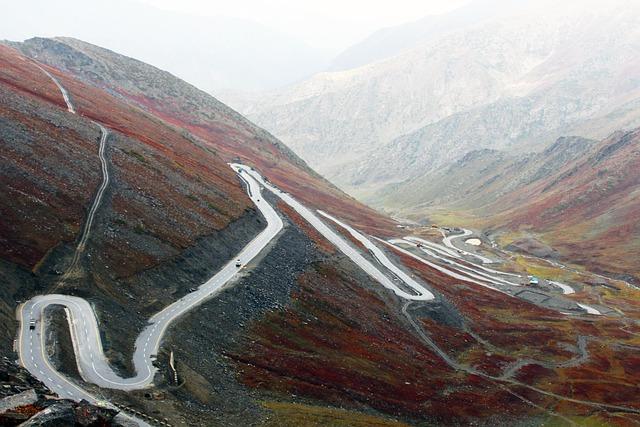In the heart of South Asia, Pakistan’s media landscape has emerged as a vibrant tapestry woven with threads of resilience, innovation, and evolution. From the smoky offices of clandestine newspapers to the bright studios of 24-hour news channels, the journey of journalism in Pakistan has been anything but straightforward. As the nation grapples with a complex interplay of political, social, and technological forces, the media continues to navigate an intricate maze of challenges and transformations. This article delves into the historical undercurrents that have shaped Pakistan’s media, exploring the triumphs and tribulations that have propelled it into an ever-changing present and future. Join us as we unpack the narrative of a profession that dares to inform, engage, and provoke thought in a country rich with stories yet to be told.
Understanding the Historical Context of Pakistans Media Transformation
The evolution of media in Pakistan has been a fascinating journey shaped by its tumultuous political landscape and sociocultural changes. From the emergence of radio broadcasts in the 1940s to the rise of television in the 1960s, media outlets have mirrored the nation’s dynamic history. The press was primarily state-controlled until the 1990s, when a wave of privatization exploded the media landscape, leading to a proliferation of news channels and printed publications. As a result, the public gained unprecedented access to diverse viewpoints, even as government censorship and influence continued to challenge journalistic integrity.
In this rapidly evolving environment, various factors played a crucial role in shaping media practices. Key influences included:
- The introduction of cable television: This revolutionized viewing habits and brought international media standards to local audiences.
- Digital media expansion: The boom of the internet and social media platforms in the 2000s reshaped how information is disseminated and consumed.
- Societal demand for accountability: An increasingly informed citizenry began to demand more transparency and responsiveness from their media.
As media entities navigated these changes, they faced challenges such as political pressures, economic constraints, and evolving audience expectations. The current landscape can be characterized by both opportunities for innovation and threats to freedom of expression, underscoring the necessity for media organizations to adapt continuously. Thus, examining the historical context of media transformation reveals the intricate interplay between journalism, society, and governance in Pakistan.

Adapting to Digital Realities: The Shift from Traditional to Online Platforms
The transition from traditional media platforms to digital realms has reshaped the media landscape in Pakistan profoundly. This shift is characterized by an increase in accessibility, allowing a broader audience to engage with content anytime and anywhere. As social media platforms and mobile applications emerged, they became vital communication tools. Consequently, the dynamics have shifted significantly, leading to the rise of new content creators and an ever-evolving relationship between audiences and media producers. Notably, this evolution has emphasized the importance of interactivity and real-time engagement, redefining how news and information are shared and consumed.
Moreover, navigating this digital transformation comes with its share of challenges. Media outlets face immense pressure to adapt to changing consumer habits, engage with audiences effectively, and combat misinformation. Key elements for success in this new environment include:
- Responsive Design: Ensuring websites are mobile-friendly to capture the on-the-go audience.
- Data Analytics: Utilizing analytics tools to understand audience preferences and improve content strategy.
- Content Authenticity: Building trust through transparent sourcing and fact-checking.
- Innovative Marketing: Leveraging social media for targeted outreach and audience engagement.
| Challenge | Solution |
|---|---|
| Misinformation | Collaborate with fact-checking organizations |
| Audience Fragmentation | Create niche content for targeted groups |
| Revenue Decline | Explore diverse monetization strategies |

Balancing Freedom and Responsibility: The Role of Media Ethics in Society
The complex relationship between media freedom and ethical responsibility is especially pronounced in countries like Pakistan, where the media landscape has undergone significant evolution. As the industry grapples with the dual mandates of being a watchdog and ensuring social harmony, the ethical dilemmas become more pronounced. Journalists and media organizations increasingly face pressures to promote transparency while also safeguarding public interests. They must strive to balance sensationalism with truthfulness, ensuring that their reporting does not inadvertently incite violence or propagate misinformation.
To navigate these challenges, media outlets are gradually adopting codes of ethics that emphasize integrity and accountability. These codes often include fundamental principles such as:
- Accuracy: Ensuring that information is verified and presented correctly.
- Fairness: Giving equal representation to all sides of a story.
- Minimizing Harm: Considering the potential impact of reporting on individuals and communities.
- Transparency: Being open about sources and methods used in journalism.
This self-regulation is vital in building public trust and navigating the constant tug-of-war between freedom of expression and societal responsibility. As the media continues to adapt to technological changes and societal expectations, the call for ethical journalism has never been more critical.

Empowering Journalists: Building Resilience through Education and Training
The rapidly changing landscape of media in Pakistan necessitates a fundamental shift in how journalists are educated and trained. In a world where misinformation can spread like wildfire, resilience becomes a key asset for journalists who must navigate these turbulent waters. Educational programs that emphasize investigative skills, ethics, and digital literacy can arm journalists with the tools they need to discern truth from falsehood and effectively report in a manner that fosters public trust. This involves not only traditional reporting techniques but also an understanding of social media dynamics, which increasingly shape public opinion and discourse.
Additionally, training initiatives should include practical workshops and mentorship opportunities that enable journalists to engage with seasoned professionals. Such programs could cover critical topics such as:
- Data Journalism: Teaching how to analyze and interpret data to uncover stories.
- Digital Security: Equipping journalists with skills to protect themselves and their sources online.
- Crisis Communication: Preparing journalists to respond effectively during breaking news situations.
Investing in the resilience of journalists not only strengthens the media landscape but also ensures that the foundations of democracy are upheld through informed and responsible reporting.
Wrapping Up
As we journey through the intricate tapestry of Pakistan’s media landscape, it becomes evident that the road has been anything but straightforward. From the echoes of press censorship that have reverberated through its corridors to the recent rise of digital platforms that challenge traditional narratives, Pakistan’s media has navigated a labyrinth of obstacles, opportunities, and transformations.
The evolution of this vibrant sphere mirrors the resilience and dynamism of the nation itself. Each challenge faced is a testament to the unwavering spirit of journalists, content creators, and advocates who strive for truth and transparency in an ever-changing environment. As technology advances and societal values shift, the future holds both promise and uncertainty for Pakistani media.
In contemplating where we stand today, we recognize that the path ahead will not be devoid of trials; yet, it is through these very challenges that the fabric of media can be woven into something stronger and more inclusive. As audiences, consumers, and stakeholders, let us remain vigilant and engaged, supporting a media landscape that reflects the diverse voices of Pakistan and fosters a culture of informed dialogue. Together, we can help shape the narrative, ensuring it is not just a record of past struggles but a beacon for a future grounded in integrity and creativity.



